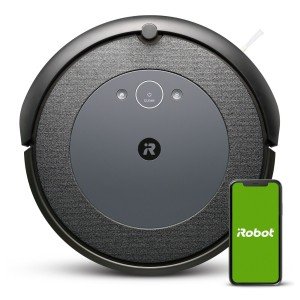The Rise of Robot Sweepers: Revolutionizing Household Cleaning
In the busy world of innovation, robotic devices have become important buddies in the mission for a cleaner home. Amongst these technological marvels, robot sweepers have gained substantial popularity due to their capability to carry out cleaning tasks effectively while lessening human effort. This post explores the intricacies of robot sweepers, their advantages, running systems, and their future in family cleaning.
What Are Robot Sweepers?
Robot sweepers, frequently referred to as robotic vacuum, are self-governing devices created to tidy floorings with very little human intervention. Equipped with various sensing units, brushes, and suction abilities, these smart devices browse through living spaces, getting dust, dirt, and particles efficiently. They come in different sizes and shapes, catering to different cleaning requirements and floor types.
Key Features of Robot Sweepers
Smart Navigation Systems:
- Many robot sweepers use innovative navigation systems such as LIDAR or camera-based mapping to create a detailed map of the area they clean up. These systems help them navigate effectively and prevent obstacles.
Scheduled Cleaning:
- Users can often configure robot sweepers to run at particular times, making it simple to keep a clean home without manual intervention.
Sensing units and Detectors:
- Robot sweepers are equipped with sensors that permit them to find dirtier locations and change their cleaning strength accordingly. Some designs can even identify stairs and ledges to prevent falling.
Compatibility with Smart Home Systems:
- Many robot sweepers can effortlessly integrate with smart home environments, allowing voice command performances and remote control through mobile phone apps.
Advantages of Using Robot Sweepers
Robot sweepers use numerous benefits that make them appealing to a wide variety of users:
Time-Saving:
- One of the most significant benefits of robot sweepers is their ability to save time. Users can set their devices to tidy while they participate in other activities, such as working or hanging out with household.
Efficient Cleaning:
- With the capability to tidy under furniture and in tight spaces, robot sweepers typically reach locations that conventional vacuum can not, ensuring a thorough cleaning experience.
Decreased Physical Labor:
- Robot sweepers decrease the physical needs of cleaning, making them perfect for elderly individuals or those with movement issues.
Constant Maintenance:
- Regularly arranged cleansings can promote better overall hygiene and health, especially for individuals with allergies to dust or pet dander.
User-Friendly:
- Generally designed for ease of usage, robot sweepers require minimal setup and can frequently be operated with just a couple of taps on a mobile phone app.
Table: Comparison of Popular Robot Sweepers
| Design | Smart Navigation | Suction Power | Battery Life | Price (Approx.) | Unique Features |
|---|---|---|---|---|---|
| iRobot Roomba 980 | Yes | High | 120 minutes | ₤ 799 | CarpetBoost innovation |
| Neato Botvac D7 | Yes | Medium | 120 minutes | ₤ 599 | D-shape design for corners |
| Eufy RoboVac 30C | Standard | Medium | 100 minutes | ₤ 249 | Quiet operation |
| Roborock S6 | Yes | High | 180 minutes | ₤ 649 | Mopping ability |
| Ecovacs Deebot OZMO | Yes | Medium | 110 minutes | ₤ 399 | Smart mopping functions |
How Robot Sweepers Work
Comprehending the inner operations of robot sweepers can shed light on why they are so reliable. Here's a streamlined overview of the process:
- Mapping: The robot sweeper starts by scanning the environment to map out the area using laser sensors or electronic cameras.
- Navigation: Once the location is mapped, the robot uses the data to browse effectively, cleaning partial areas before moving on to others.
- Cleaning: Equipped with brushes and suction mechanisms, the robot sweeper gathers debris and dirt from floorings.
- Returning Home: Upon finishing its job or when the battery is low, the robotic vacuum immediately goes back to its charging dock.
FAQs About Robot Sweepers
1. Can robot sweepers replace traditional vacuum cleaners?
- While robot sweepers are excellent for maintaining cleanliness and managing light dirt, they might not totally change conventional vacuums for deep cleaning jobs.
2. How often should I run my robot sweeper?
- It is advisable to run robot sweepers at least two times a week, depending upon foot traffic in your home.
3. Are robot sweepers appropriate for pet owners?
- Yes, many models are particularly designed for pet hair removal and function specialized brushes and effective suction options.
4. Do robot sweepers deal with carpets?
- Most robot sweepers can clean carpets effectively, but suction power and brush style might differ. High-end designs frequently have settings to adjust to carpeted surface areas.
5. How much do robot sweepers cost?
- Costs differ based upon features and brands, ranging from about ₤ 200 for budget options to over ₤ 900 for high-end models with advanced capabilities.
The expansion of robot sweepers marks a considerable improvement in family cleaning technology. While they may not totally change standard cleaning methods, robot sweepers provide unrivaled convenience, performance, and the capability to lower physical strain on users. As technology advances, these devices are most likely to become even smarter, more effective, and more integrated with other smart home systems, making them a staple in modern-day households. Ultimately, automatic vacuum of robot sweepers is a testimony to the evolving landscape of home cleaning services-- one that improves every day life and promotes a cleaner living environment.

